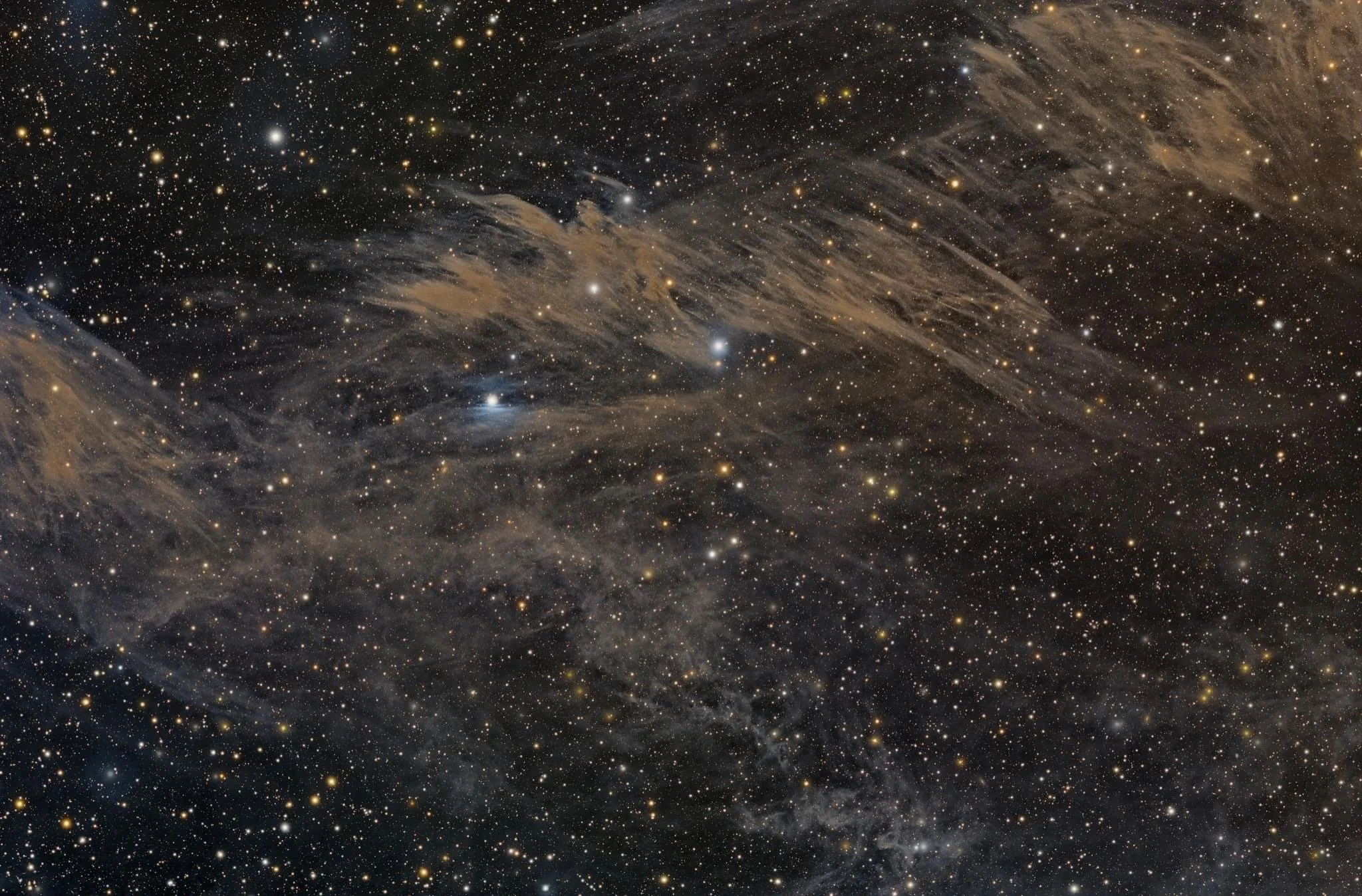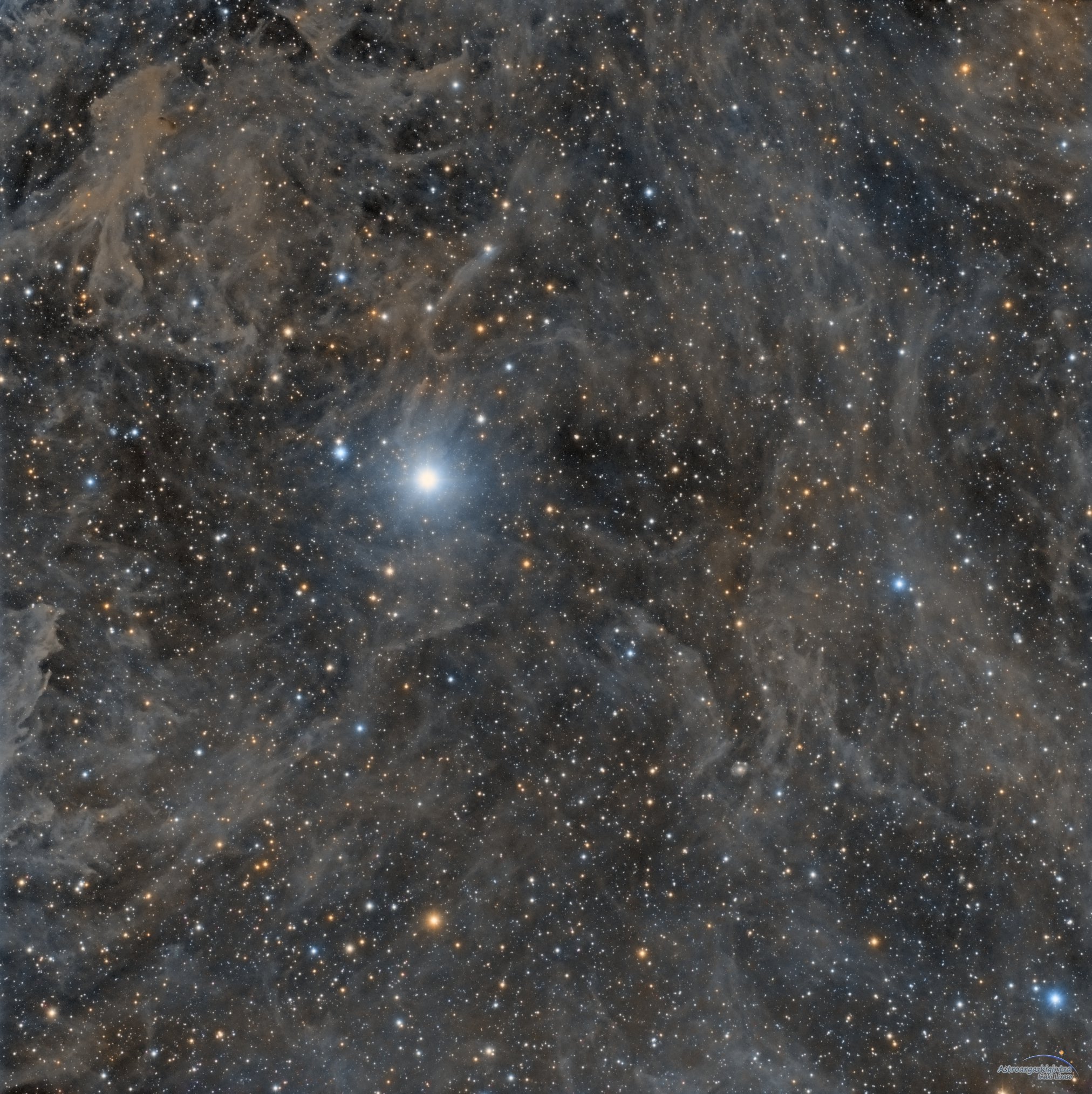
AAPOD2 Image Archives
Inside The South Celestial Serpent
The South Celestial Serpent is a large integrated flux nebula (IFN). IFN are composed of diffuse dust particles, hydrogen and carbon monoxide and other elements. Unlike reflection nebula’s which are lit by proximate stars, IFN are illuminated by the glow of the Milky Way Galaxy and are much fainter than most reflection nebulae. IFN were only identified quite recently in great part due to improvements in the sensitivity of imaging sensors. They are very prominent in the direction of both the north and south celestial poles. The large IFN nebula close to the south celestial pole is MW9 and is commonly termed the South Celestial Serpent.
Imaged in RGB on our RH 350 at Observatorio El Sauce, Chile.
Image Processing: Mike Selby and Mark Hanson
Markarian's chain & IFN
Image Description and Details : Reworking of a previous photo highlighting the NFI that characterizes the cluster of the Virgin.
The IFN (Integrated Flux Nebulae) are huge systems of very faint and faint filaments nebulae predominantly not illuminated belonging to the high Galactic latitudes of the Milky Way.
The most extensive system of this type extends along all the northern constellations of the northern celestial hemisphere reaching even the Polar star.
These nebulae have in common the fact that they are not illuminated by a single star but by all the stars of the Milky Way in the vicinity.
Their visibility is conventionally divided between very Bright (those close to M81 and M82), Medium, Faint (weak, as in the case of the Markarian's chain) and dim (poor).
The IFN present in the Markarian cluster is however rather surprising both for its distance from the galactic plane and for its relative brightness although defined as very poor in the details.
Copyright: Giambattista Rizzo
Polaris, Polarissima Borealis and IFN
Image Description and Details : Polaris is a star in the constellation Ursa Minor. Designated α Ursae Minoris and commonly called the Pole Star. The star's position is less than one degree from the north celestial pole, making it the current north pole star. The entire field is full of Integrated Flux Nebula, high-latitude galactic nebulae in the Milky Way composed primarily of dust particles, hydrogen and carbon monoxide, and are illuminated by stars in the Milky Way. NGC 3172 is located 285 million light years away, known as Polarissima Borealis, being the closest NGC object to the North Celestial Pole.
Copyright: Iñaki Lizaso
M81, M82, & the Integrated Flux Nebula
Image Description and Details :
Bode's Galaxy, the Cigar Galaxy, and the Integrated Flux Nebula January 6 - January 28 2022 Rowe, NM 305mm Riccardi-Honders @ f/3.8 AP1100 GTO AE Mount, Unguided QHY600PH monochrome @-20*CChroma 50mm x 50mm filtersHaLRGB66.3 hours total integration time
Copyright: Jared Willson
M 81 and IFN
Image Description and Details :
Galaxy M 81, located in the Constellation Ursa Major at 12 million AL from the Milky Way. It is a spiral galaxy, relatively modest since its diameter is only 87000 light-years. It is in gravitational interaction with its neighbor M 82.
This picture was taken by Team ARO in South Portugal from 07/03/21 to 12/05/21 in Remote from France.
Equipment used: FSQ 106 on EQ6 Pro mount, ZWO Asi 1600MM camera.
Total exposure time: 25,74H
L=269x2
R=97x2
V=118x2'
B=100x2'
Ha=134x3'
Copyright: Team ARO






